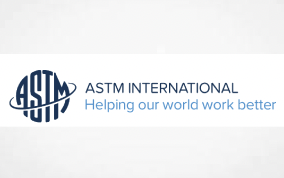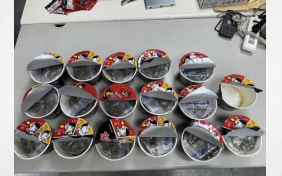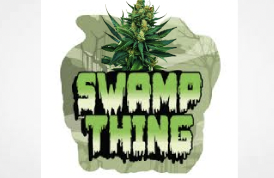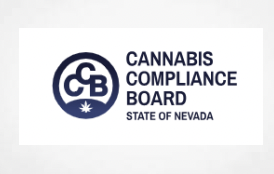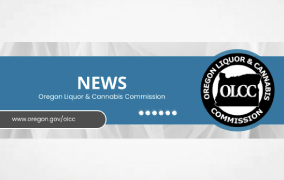Two New Standards Will Bring Consistency to Cannabis Industry
ASTM International’s cannabis committee (D37) has approved two complimentary standards that address quality management systems (QMS) and good manufacturing practices (GMPs).
New standard D8556 provides a concise set of QMS requirements that can be used as the basis for any/all of the following: gap assessments, internal and external audits, training programs, certification programs, and implementation checklists.
“This standard was written to provide a definitive and authoritative list of QMS requirements to produce internal assessment and certification audit programs,” says ASTM member Ed Nodland. “This standard defines what is required, while the individual guides address why and how to implement the elements of an operation’s QMS.”
Nodland notes that the new standard will have several uses:
- Cannabis businesses will be able to perform assessments to identify and address gaps in quality practices;
- Regulators can review regulations for gaps, and;
- Certification bodies can perform QMS certification audits based on industry consensus requirements.
- Consumers will be able to trust that products purchased from a certified operation can be trusted to be consistent from purchase to purchase.
The second new D37 standard, D8557, will provide guidance for developing and implementing GMPs for the manufacture of cannabis/hemp-containing edibles, dietary supplements, topicals, and inhaled products for human use.
“This new standard is a practical roadmap on what it means to have GMPs for companies that produce various kinds of cannabis products, “says ASTM member Steven Gendel. “This is particularly important for producers that operate in jurisdictions where local regulations are incomplete or unclear.”
Gendel says that D8557 will help ensure a cannabis-containing product is made in an environment that keeps it safe and high-quality.
“Together D8556 and D8557 provide much-needed consistency across many jurisdictions,” says Nodland. “Multi-regional operations are faced with a wide variety of regulations. As these two standards gain acceptance and adoption by the industry and regulators, internationally accepted practices will emerge.”
Standard Practice for Requirements of a Quality Management System for Cannabis and Hemp Operations
Significance and Use
4.1 Having a concise set of QMS requirements allows users of this practice to understand “what” needs to be established, consistently practiced, monitored, maintained, and improved.
4.2 Guidance on “how” and “why” to implement the QMS elements are provided in the referenced guides and practices for each element.
4.3 These QMS requirements can be used as the basis for gap assessments, internal and external audits, training programs, certification programs, an implementation checklist, or a combination of these uses.
4.4 As the regulated cannabis industry moves forward, authorities having jurisdiction are adopting good practice protocols and quality management system requirements. QMS principles are a foundation for good manufacturing practices (GMP), good agricultural and collection practices (GACP), and good laboratory practices (GLP). This practice does not focus on a particular type of cannabis operation. It provides QMS requirements incorporating requirements specific to GMP, GACP, and GLP that can be applied to these operations.
4.5 Each type of operation may need to adapt a requirement to meet certain GACP, GMP, or GLP requirements by documenting the requirement and how it is adapted to meet the specific requirement.
4.6 When a QMS requirement is not applicable to an operation, the operation shall document the reason a requirement is not applicable. By doing this, each requirement is addressed and if the reason is justifiable the operation can be considered in full compliance with these requirements.
4.7 This practice provides an internationally recognized set of requirements that can be used by:
4.7.1 Operations that grow, harvest, process, test, package, or distribute adult-use and medicinal cannabis and hemp to voluntarily implement quality practices;
4.7.2 State and national regulatory agencies to inform good practice and quality-related regulations; and
4.7.3 Third-party training, consulting, and certification bodies to base their services on.
Scope
1.1 This practice covers a concise set of requirements for the elements of an effective quality management system (QMS) for the cannabis industry’s agriculture, processing, and testing operations. Related ASTM guides and practices are available or are being written for each of the QMS elements. The available guides and practices are referenced throughout this practice. Guide D8222 provides guidance for establishing a quality management system.
1.2 Understanding the significance and use of these requirements in Section 4 is important to properly meet the requirements.
1.3 This practice applies to all types of operations from cultivation, processing, testing, distribution, and other related operations. If some QMS elements do not apply to a specific type of operation it shall be documented in the operations quality manual as described in 6.2.
1.4 Laws and regulations from authorities having jurisdiction supersede requirements within this practice.
1.5 This standard does not purport to address all of the safety concerns, if any, associated with its use. It is the responsibility of the user of this standard to establish appropriate safety, health, and environmental practices and determine the applicability of regulatory limitations prior to use.
1.6 This international standard was developed in accordance with internationally recognized principles on standardization established in the Decision on Principles for the Development of International Standards, Guides and Recommendations issued by the World Trade Organization Technical Barriers to Trade (TBT) Committee.
Standard Guide for Good Manufacturing Practices (GMPs) for Cannabis/Hemp-Containing Edibles, Dietary Supplements, Topicals, and Inhaled Products
Significance and Use
5.1 This guide provides guidance for the development and implementation of Good Manufacturing Practices (GMPs) for the manufacture of cannabis/hemp-containing edibles, dietary supplements, topicals, and inhaled products for human use. These GMPs create and maintain conditions that support product safety and quality.
5.2 This guide applies to facilities that operate in jurisdictions where actionable regulatory GMP requirements do not exist.
5.2.1 In jurisdictions where actionable regulatory GMP requirements do exist, this guide may be used to provide additional information and guidance.
5.3 This guide is consistent with internationally recognized practices. However, local laws and regulations take precedence.
5.4 Note that the specific terminology used to describe the various components of GMPs in some jurisdictions may differ from those used in this guide.
Scope
1.1 This guide describes Good Manufacturing Practices (GMPs) for use by facilities that produce cannabis/hemp-containing edibles, dietary supplements, topicals, and inhaled products for human use. It applies to facilities that operate in jurisdictions without actionable regulatory GMP requirements, to all aspects of manufacturing, including the use of non-cannabis/hemp ingredients, additives, or components, and regardless of which plant part or derivative is used.
1.2 Other guides will address GMPs for facilities that operate in jurisdictions with specific requirements for manufacturing these products or other types of cannabis/hemp-containing products such as for veterinary use.
1.3 This guide does not apply to cultivation, harvesting, or immediate post-harvest activities such as trimming, cleaning undesired plant parts, drying, and curing. Guidance on Good Cultivation Practices will be provided in a separate standard.
1.4 This guide does not apply to products or ingredients that have been approved by a regulatory authority for use as food ingredients, dietary ingredients, or drug substances (for example, hemp seeds as a food ingredient), and are produced within the scope of that approval.
1.5 This standard does not purport to address all of the safety concerns, if any, associated with its use. It is the responsibility of the user of this standard to establish appropriate safety, health, and environmental practices and determine the applicability of regulatory limitations prior to use.
1.6 This international standard was developed in accordance with internationally recognized principles on standardization established in the Decision on Principles for the Development of International Standards, Guides and Recommendations issued by the World Trade Organization Technical Barriers to Trade (TBT) Committee.
